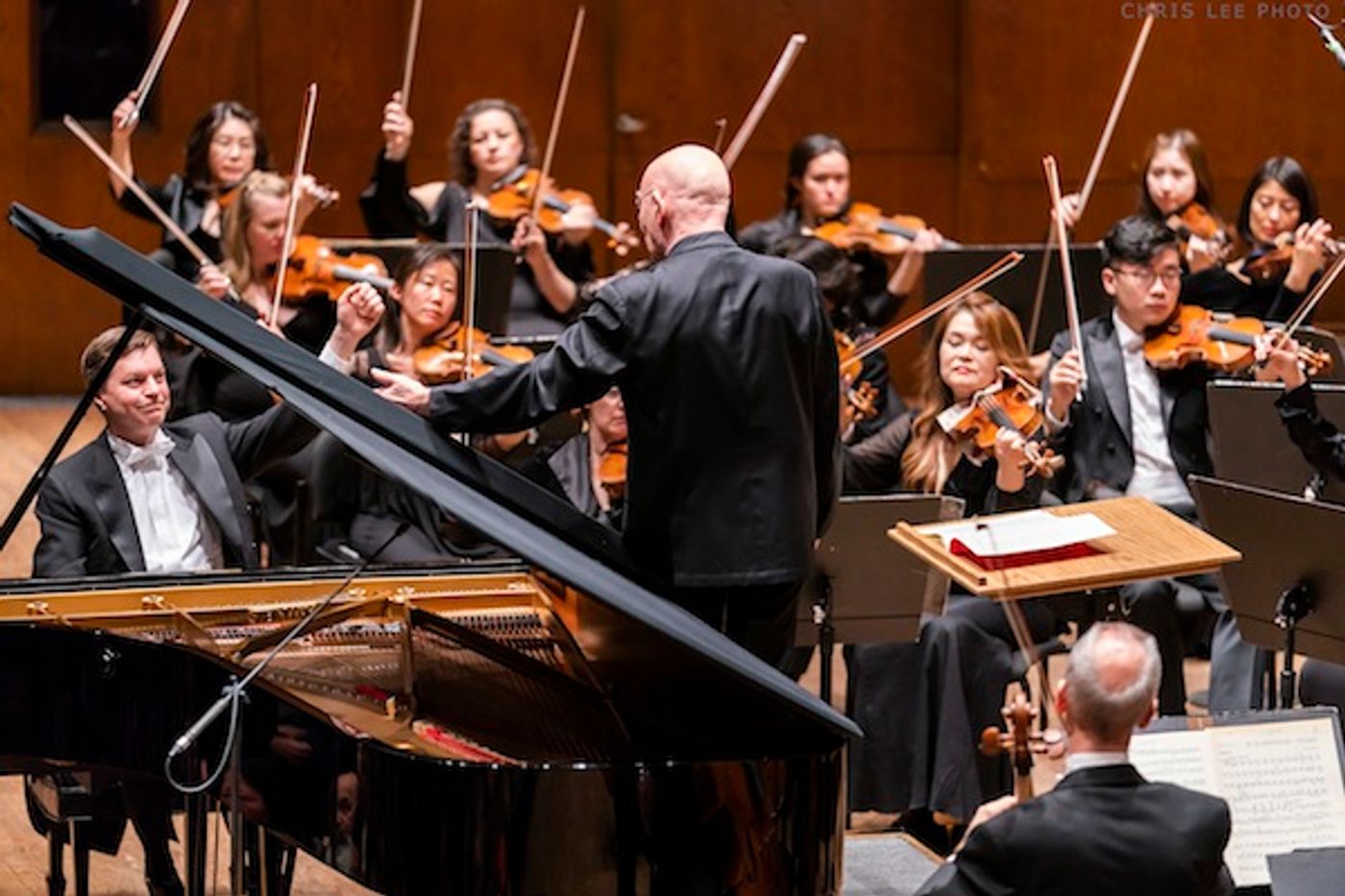Review: MOZART AND BRUCKNER AT THE NY PHILHARMONIC at David Geffen Hall

Mozart is often paired with Bruckner in concert setting for many reasons: respective lengths, juxtaposition of styles. Etc. 's E flat Concerto was composed at the same time that the composer was working on his masterpiece "Le nozze di Figaro," and there are clearly echos of that work present in the concerto: most notably in the Rondo finale and its' minuetto interpolation. The piece is also the very first time chose to use clarinets in the scoring of a concerto.
It's dangerous pairing a languid piece like the E flat Concerto alongside a mammoth, violent symphony such as the Bruckner 9th. You run the risk of the piece appearing trivial and insubstantial - and depending upon the conductor and soloist, even timid by comparison.
No such risk was run at Geffen Hall as Austrian pianist Till Fellner made his New York Philharmonic, taking on the concerto under the baton of Christoph Eschenbach. The German-born Eschenbach is no stranger to Mozart Concerti, having made his own New York Philharmonic debut as soloist in Mozart's Piano Concerto No. 24 in 1974
The 22nd concerto is an elegant even stately work that provided Mr. Fellner ample opportunity to display once again why he is one of the world's leading Mozart specialists.
The Allegro 1st Movement feels a bit ceremonial in tone, as the opening horn duet is replied to by bassoons, then the entire passage is repeated only with duet played by the clarinets. The seemingly simple melodies are richly colored by interesting little details. When the piano joins, the effect is much like a chamber piece, with great intimacy. Fellner and Eschenbach were in lock-sync throughout and the interplay was marvelous. This was especially evident in the Andante 2nd movement. The movement begins with a ravishingly beautiful and simple theme, which his followed by three increasingly elaborate variations on the theme. Mr. Fell spun out the first two variations with extreme delicacy, aided by just a hint of accompaniment from the orchestra.
Mr. Fellner's playing was regal, brisk and confident and displayed dazzling moments of impressive virtuosity. In the final movement, soloist and orchestra took an interesting approach. Rather than the more bombastic manner which most performances typically employ, Mr. Fellner and Maestro Eschenbach chose a slightly lighter approach, a more delicate one, stressing elegance, detail and color over thunder and grandiosity.
The second half of the program providing plenty of the bombast that the first half eschewed. Eschenbach pulled out the stops on both volume and emotion in a positively ferocious rendering of the unfinished 9th. Clearly the conductor chose a fire and brimstone approach over a more soulful, contemplative one. Either way, the sense of finality hung in the air throughout.
![]()
From the opening strings, with their undercurrent of tension just beneath the surface waiting to break through, it was clear that Maestro Eschenbach was not going to hold anything back. The tempestuousness of the first movement was punctuated with enormous blasts of brass cutting through the dulcet strings. Bruckner was rarely content to let one melody exist on its own for very long, always introducing a hint of discord to the mix, and Eschenbach did not keep the underpinning quiet, rather he brought it to the forefront every chance he got. The conductor addressed his orchestra with the bearing of a field general, providing grand punctuations of the tempo.
The pizzicato that begins the great scherzo was far from delicate, rather it continued to gather steam all the way up to the introduction of the pulsating brass and strings. Often the quiet of the pizzicato offers a dramatic juxtaposition against the roaring brass and strings, but Eschenbach chose to offer a great building of tension which finally erupted, causing fillings to rattle and the building to shake.
The third movement which Bruckner referred to as his "Farewell to Life" was also huge. The regal, rising brass unfolded into equally elegant strings. It was an interesting take to be sure. Many other conductors choose a greater level of dynamic juxapostion here, which tends to bring a more delicate sensibility to the movement.
Eschenbach continually put the pedal to the metal and the climaxes of the final movement were absolutely spectacular, and cataclysmic in intensity. The final apocalyptic blast which decayed into the ravishing Wagner tubas yearnfully calling out into the distance brought about a fitting climax to an extremely thrilling ride.
-Peter Danish
Reader Reviews
Videos

